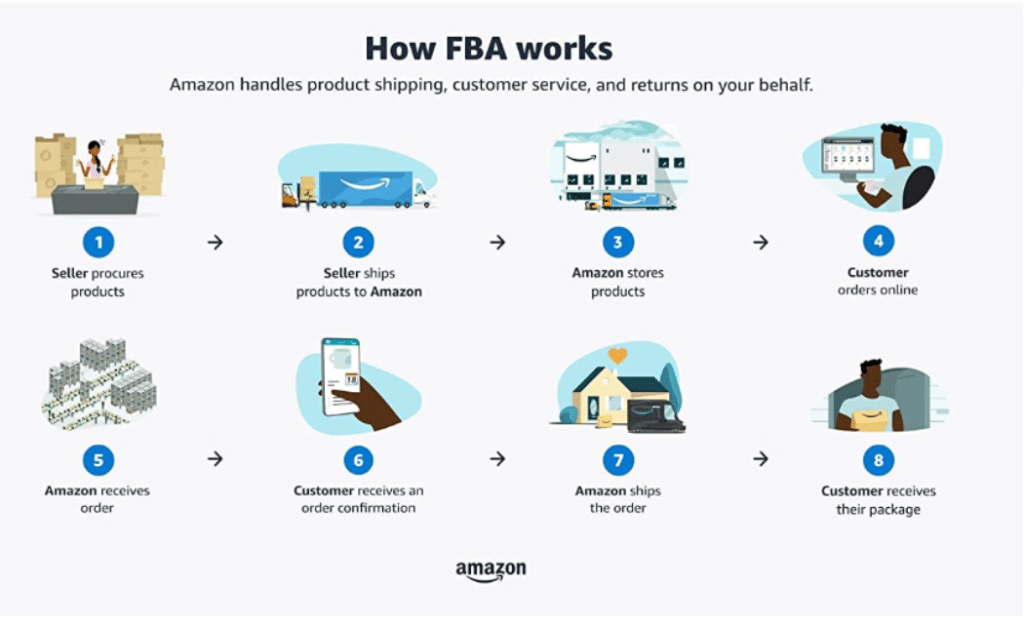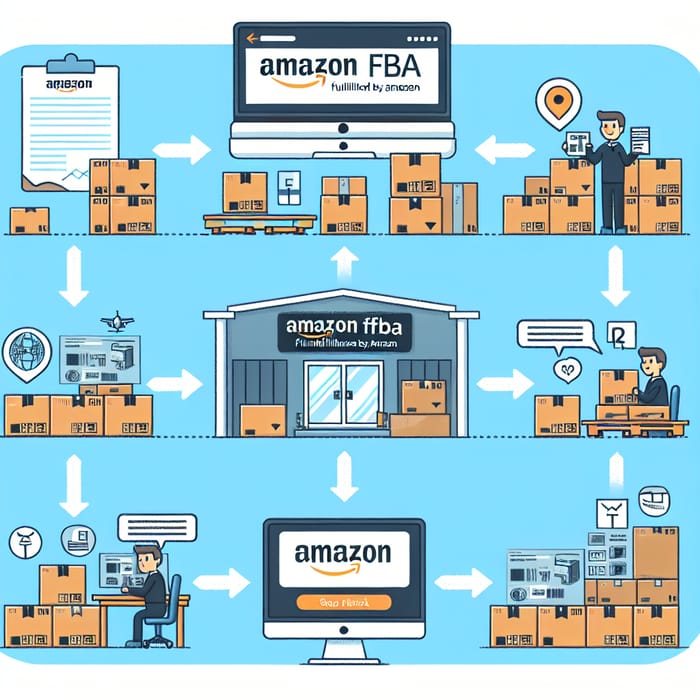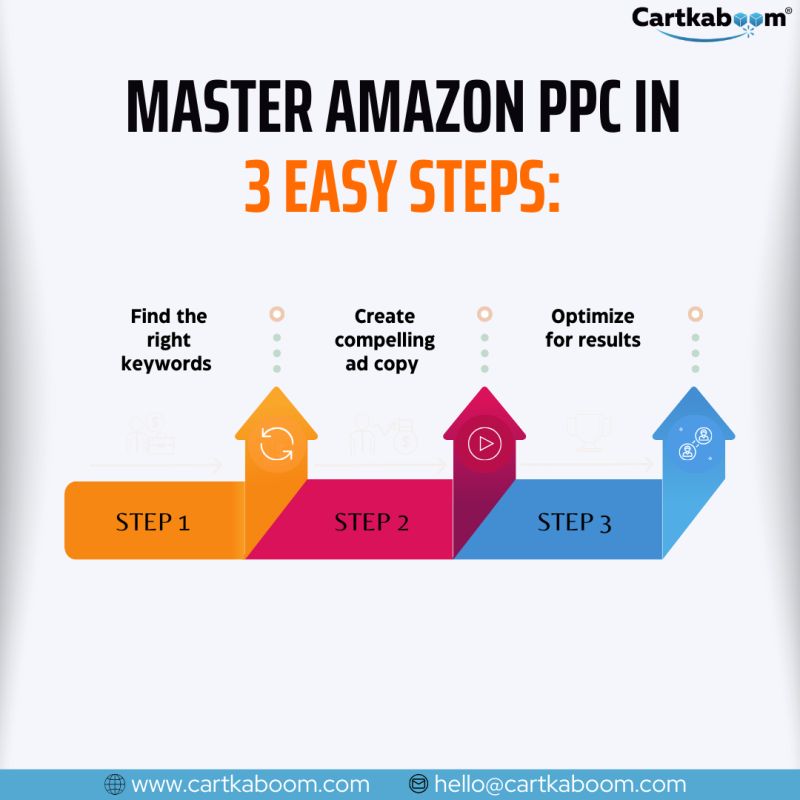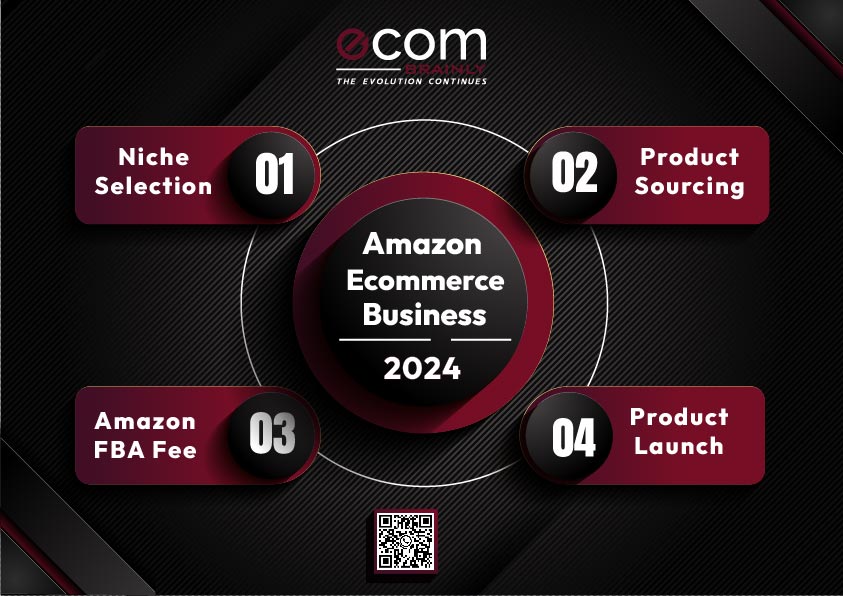Uncover the secrets to mastering Amazon FBA with this comprehensive step-by-step guide. Take your e-commerce business to the next level!
Table of Contents
- Introduction to Amazon FBA
- Why Choose Amazon FBA?
- Setting Up Your Amazon FBA Account
- Understanding Amazon FBA Fees
- Finding Products to Sell
- Preparing Products for Amazon FBA
- Managing Your Amazon FBA Inventory
- Promoting Your Amazon FBA Products
- Learning from Others: Amazon FBA Communities
- Amazon FBA Success Stories
- Common Amazon FBA Challenges
- Conclusion
- Frequently Asked Questions (FAQs)
Introduction to Amazon FBA
Have you ever wondered how people sell products on Amazon without having to worry about storing, packing, and shipping them? Well, that’s where Amazon FBA comes in! In this section, we’ll break down what Amazon FBA is all about in simple terms so you can understand how it revolutionizes the way sellers do business.
What Does FBA Stand For?
First things first, let’s decipher the acronym. FBA stands for ‘Fulfillment by Amazon’. Basically, it means that sellers can send their products to Amazon’s fulfillment centers, and from there, Amazon takes care of storing, packing, and shipping those products to customers. This allows sellers to focus on other aspects of their business, like finding the best products to sell and promoting their listings.
Why Choose Amazon FBA?
Are you thinking about starting your own business and selling products online? Amazon FBA might be the perfect choice for you! Let’s explore why Amazon FBA is a fantastic option for anyone interested in starting their e-commerce journey.
Benefits for Sellers
Amazon FBA offers a range of benefits that can make selling products online much easier and more efficient. One of the main advantages is that Amazon takes care of all the logistics for you. This means you don’t have to worry about storing inventory, packing orders, or shipping products to customers. Amazon FBA handles all of that for you, allowing you to focus on growing your business and providing excellent customer service.
Additionally, Amazon’s customer service is top-notch. They handle all customer inquiries and returns, freeing up your time to focus on other aspects of your business. This can help build trust with your customers and lead to repeat business.
Another key benefit of using Amazon FBA is access to Amazon Prime customers. When you use FBA, your products are eligible for Prime shipping, which can attract more customers due to the fast and reliable delivery options. This can give you a competitive edge in the market and help increase sales.
Setting Up Your Amazon FBA Account
So, you’ve decided to dive into the world of online selling with Amazon FBA. But before you can start making money, you need to create an Amazon FBA account. Don’t worry, it’s a simple process that we’ll guide you through step by step.

Image courtesy of www.yaguara.co via Google Images
Creating an Amazon Seller Account
The first thing you need to do is set up an Amazon Seller Account. This account will allow you to manage your inventory, fulfill orders, and track your sales. To create your seller account, head over to Amazon’s website and click on the “Sell” button. You’ll be prompted to sign in with your Amazon account or create a new one if you don’t already have one.
Once you’re logged in, you’ll need to provide some basic information about your business, such as your company name, address, and contact details. Amazon will also ask for your billing information so they can charge you for any fees associated with selling on their platform.
After you’ve filled in all the necessary details, you’ll need to verify your identity. This can be done either through a phone call or by receiving a text message with a verification code. Once you’ve verified your identity, congratulations! You’re now the proud owner of an Amazon Seller Account.
Now that you have your account set up, you can start listing your products and taking advantage of all the benefits that come with selling through Amazon FBA. Happy selling!
Understanding Amazon FBA Fees
When you decide to start selling products using Amazon FBA, it’s essential to understand the fees associated with this service. Let’s break down the different types of fees you might come across so you can plan your business effectively.
Types of Fees Explained
1. Storage Fees: These fees are charged based on the amount of space your products take up in Amazon’s fulfillment centers. The size and weight of your items will determine the cost of storage.
2. Fulfillment Fees: Amazon charges a fee for picking, packing, and shipping your products to customers. This fee varies depending on the size and weight of the item.
3. Long-Term Storage Fees: If your products remain in Amazon’s warehouses for an extended period, you may incur additional fees. It’s crucial to monitor your inventory levels to avoid these extra charges.
By understanding these fees, you can calculate your potential costs and factor them into your pricing strategy. This knowledge will help you run a successful Amazon FBA business without any surprises along the way.
Finding Products to Sell
When starting your Amazon FBA business, one of the crucial steps is finding the right products to sell. You want to choose items that are in demand and have the potential to bring you profits. Here’s how you can do it:

Image courtesy of easy-peasy.ai via Google Images
Researching Products
To begin, think about what types of products interest you or that you are knowledgeable about. This can make it easier to research and understand the market for those items. You can use tools like Amazon’s Best Sellers list to see what products are currently popular. Additionally, you can explore online marketplaces beyond Amazon, such as eBay or Etsy, to identify trending products.
Another method is to conduct keyword research using tools like Google Keyword Planner or Amazon’s own search bar. By searching for relevant keywords related to your product idea, you can see how much demand there is for those items.
Furthermore, it’s essential to consider the competition for the products you’re interested in. Look at similar listings on Amazon to gauge how many other sellers are offering the same or similar items. You want to find a balance between a product that is in demand and one that doesn’t have too much competition.
Remember, the key to success in the Amazon FBA business is finding products that have a market demand and can generate a profit. By thorough research and analysis, you can increase your chances of selecting the right products to sell on the platform.
Preparing Products for Amazon FBA
When it comes to selling products on Amazon using the FBA service, it’s essential to ensure that your items are prepared and packaged correctly before sending them to Amazon’s fulfillment centers. Properly preparing your products not only ensures a smooth process but also helps provide a positive customer experience. Let’s dive into the key steps of preparing products for Amazon FBA.
Packing and Labeling
One of the critical aspects of preparing products for Amazon FBA is the proper packing and labeling of your items. Here’s a step-by-step guide to help you through this process:
1. Choose the Right Packaging: Select packaging materials that are sturdy and appropriate for your products. Make sure the packaging is secure to prevent any damage during transportation.
2. Label Your Products: Each item you send to Amazon’s fulfillment centers needs to have a unique product label. These labels contain essential details such as the product name, SKU, and barcode. You can generate these labels through your Amazon Seller Central account.
3. Follow Amazon’s Packaging Guidelines: Amazon has specific packaging requirements that you must adhere to when sending in your products. This includes guidelines on box dimensions, packaging materials, and weight limits. Be sure to follow these guidelines to avoid any issues with your shipment.
4. Include Packing Slips: It’s a good practice to include packing slips inside each box with details of the items being shipped. This helps Amazon associates verify the contents of the shipment quickly.
By following these packing and labeling guidelines, you can ensure that your products are ready for Amazon FBA and meet the necessary requirements for a smooth selling process.
Managing Your Amazon FBA Inventory
In order to run a successful Amazon FBA business, it is crucial to effectively manage your inventory. Keeping track of your stock ensures you can meet customer demand and avoid unnecessary costs. Here are some tips on managing your Amazon FBA inventory:

Image courtesy of texta.ai via Google Images
Inventory Tracking
Amazon provides sellers with tools to monitor their inventory levels. Through the Seller Central dashboard, you can easily check how many units of each product you have in stock. It is important to regularly update your inventory levels to prevent overselling or running out of stock.
| Chapter | Title | Description |
|---|---|---|
| 1 | Introduction to Amazon FBA | An overview of what Amazon FBA is and how it works. |
| 2 | Setting Up Your Amazon Seller Account | Step-by-step guide on creating and optimizing your seller account. |
| 3 | Finding Profitable Products to Sell | Strategies for product research and sourcing for maximum profitability. |
| 4 | Listing and Optimizing Your Products | Best practices for creating product listings that convert and rank well. |
| 5 | Managing Inventory and Fulfillment | Tips for efficiently managing your inventory and orders using FBA. |
| 6 | Marketing and Promoting Your Products | Strategies for driving traffic and sales to your Amazon listings. |
| 7 | Handling Customer Service and Returns | Guidance on providing excellent customer service and managing returns. |
By setting up alerts for low stock or running out of stock, you can stay ahead of demand and restock products in a timely manner. This proactive approach helps in maintaining a positive customer experience and avoiding any potential disruptions in your business.
Utilizing Amazon’s inventory reports can also provide valuable insights into your sales trends and help you make informed decisions about restocking or discontinuing certain products. By closely monitoring your inventory, you can optimize your storage costs and overall business efficiency.
Remember, effective inventory management is key to the success of your Amazon FBA business. By staying organized and utilizing the tools available to you, you can ensure a smooth operation and maximize your sales potential.
Promoting Your Amazon FBA Products
Once you have your products listed on Amazon through Fulfillment by Amazon (FBA), it’s essential to promote them to increase visibility and boost sales. Let’s explore some effective ways to market your FBA products.
Advertising and Marketing
One powerful way to promote your Amazon FBA products is through advertising and marketing. Amazon offers various advertising options, such as Sponsored Products, Sponsored Brands, and Sponsored Display, which can help your products appear at the top of search results and reach more potential customers. By strategically investing in advertising, you can drive traffic to your listings and increase sales.
Outside of Amazon, you can utilize social media platforms like Facebook, Instagram, and Pinterest to showcase your products to a broader audience. Creating engaging content, running targeted ads, and collaborating with influencers can help generate interest and drive traffic to your Amazon listings.
Additionally, email marketing is another effective way to promote your FBA products. By building an email list of interested customers and sending out promotional campaigns, you can nurture relationships, drive repeat purchases, and increase brand awareness.
Don’t forget the power of search engine optimization (SEO) for your Amazon listings. Optimizing your product titles, descriptions, and backend keywords with relevant, high-ranking keywords can improve your visibility on Amazon and attract more organic traffic to your listings.
By combining these advertising and marketing strategies, both on and off Amazon, you can effectively promote your FBA products and maximize your sales potential.
Learning from Others: Amazon FBA Communities
When you’re starting your journey as an Amazon FBA seller, it’s essential to learn from others who have walked the same path. By tapping into the wisdom and experiences of fellow sellers, you can gain valuable insights and avoid common pitfalls. One excellent way to connect with like-minded individuals and learn from their successes and challenges is by joining Amazon FBA communities.

Image courtesy of ippei.com via Google Images
Reddit and Other Forums
Reddit is a popular online platform where people from all walks of life gather to share information, ask questions, and engage in discussions. Within the Amazon FBA subreddit, you can find a wealth of knowledge shared by experienced sellers, beginners seeking advice, and everything in between. By participating in these forums, you can ask specific questions, seek recommendations on tools and strategies, and even find motivation when you hit roadblocks.
Aside from Reddit, there are other forums and online communities dedicated to Amazon FBA where you can network with sellers, join mastermind groups, and access valuable resources. These communities often feature discussions on the latest trends, tools, strategies, and success stories in the world of Amazon FBA. By actively engaging with these platforms, you can stay updated on industry news, learn new techniques, and build a supportive network of peers.
Amazon FBA Success Stories
In this section, we will look at some inspiring stories of individuals who have achieved success through their Amazon FBA business. These real-life examples serve as motivation for anyone looking to start their own journey in the world of e-commerce.
Case Studies
One remarkable success story is that of Sarah, a stay-at-home mom who started selling handmade jewelry on Amazon FBA. Despite initial doubts about whether her hobby could turn into a profitable business, Sarah’s determination and hard work paid off. Within a year, she was able to expand her product line, increase her sales, and even hire help to keep up with demand.
Another example is Mark, a recent college graduate who decided to pursue his passion for fitness by selling workout equipment through Amazon FBA. Through thorough market research and targeted advertising, Mark was able to carve out a niche for himself in the competitive fitness industry. His dedication to providing top-quality products and excellent customer service earned him a loyal customer base and steady growth in sales.
These success stories highlight the diverse opportunities available through Amazon FBA. Whether you are a stay-at-home parent, a recent graduate, or someone looking to turn a hobby into a business, Amazon FBA provides a platform for anyone with the drive and determination to succeed.
Common Amazon FBA Challenges
Running an Amazon FBA business comes with its own set of challenges that sellers may face. Understanding and overcoming these challenges is crucial for success in the world of e-commerce. Let’s delve into some common hurdles that FBA sellers encounter and how to tackle them.

Image courtesy of ecombrainly.com via Google Images
Troubleshooting Tips
Inventory Management: One of the most common challenges FBA sellers face is managing their inventory effectively. Keeping track of stock levels, avoiding stockouts, and dealing with excess inventory can be overwhelming. To overcome this challenge, make use of Amazon’s inventory management tools to monitor your stock levels in real-time. Set up restock alerts to ensure you never run out of popular products.
Competition: With millions of sellers on Amazon, competition is fierce. Standing out in a crowded marketplace can be tough. To tackle this challenge, focus on creating unique product listings with high-quality images and compelling product descriptions. Consider running promotions or advertisements to increase visibility and attract more customers.
Shipping and Fulfillment: Shipping delays and fulfillment issues can impact customer satisfaction. To address this challenge, work closely with Amazon’s fulfillment centers to ensure smooth and timely order processing. Optimize your packing and labeling process to minimize errors and reduce the risk of returns.
Managing Returns: Dealing with returns can be a headache for FBA sellers. To handle returns efficiently, have a clear and customer-friendly return policy in place. Make the return process as seamless as possible for customers to maintain their trust and loyalty.
Profit Margins: Balancing costs and revenue to maintain healthy profit margins is a challenge many FBA sellers face. To improve profitability, regularly review and adjust your pricing strategy. Look for ways to reduce costs, such as optimizing shipping methods or sourcing products at lower prices.
By addressing these common challenges head-on and implementing effective solutions, FBA sellers can navigate the complexities of e-commerce and build a successful business on Amazon.
Conclusion
Throughout this guide, we’ve delved into the world of Amazon FBA and how it can benefit aspiring entrepreneurs like you. We started by understanding what Amazon FBA stands for – Fulfillment by Amazon, which takes care of storage, shipping, and customer service for sellers. The ease and convenience it offers make it an attractive choice for anyone looking to sell products.
Setting up your Amazon FBA account may seem daunting at first, but with the step-by-step instructions provided, you’ll find it’s a manageable process. Knowing and understanding the different Amazon FBA fees is crucial to running your business effectively. By researching, preparing, and managing your products wisely, you can ensure smooth operations and maximize profits.
Don’t forget the importance of promoting your products and engaging with communities like Reddit to learn from others’ experiences. By following success stories and preparing for common challenges, you’ll be better equipped to navigate the world of Amazon FBA.
As you embark on your Amazon FBA journey, remember that persistence, creativity, and a willingness to learn are key. Don’t be afraid to take risks, seek advice, and adapt your strategies as needed. With dedication and a passion for entrepreneurship, you too can achieve success in the world of Amazon FBA. Good luck on your exciting new venture!
Frequently Asked Questions (FAQs)
FAQ 1
What is Amazon FBA?
Amazon FBA stands for ‘Fulfillment by Amazon.’ This means that as a seller, you can store your products in Amazon’s fulfillment centers. When customers place orders, Amazon picks, packs, and ships the products on your behalf. This service also includes customer service and handling returns, making selling online much easier for you.
FAQ 2
What are Amazon FBA fees?
Amazon FBA fees include various costs associated with using the service. These fees may include storage fees for keeping your products in Amazon’s warehouses, fulfillment fees for picking, packing, and delivering your items, and even long-term storage fees for products that stay in the warehouse for an extended period. Understanding these fees is essential for planning and managing your business effectively on Amazon.
